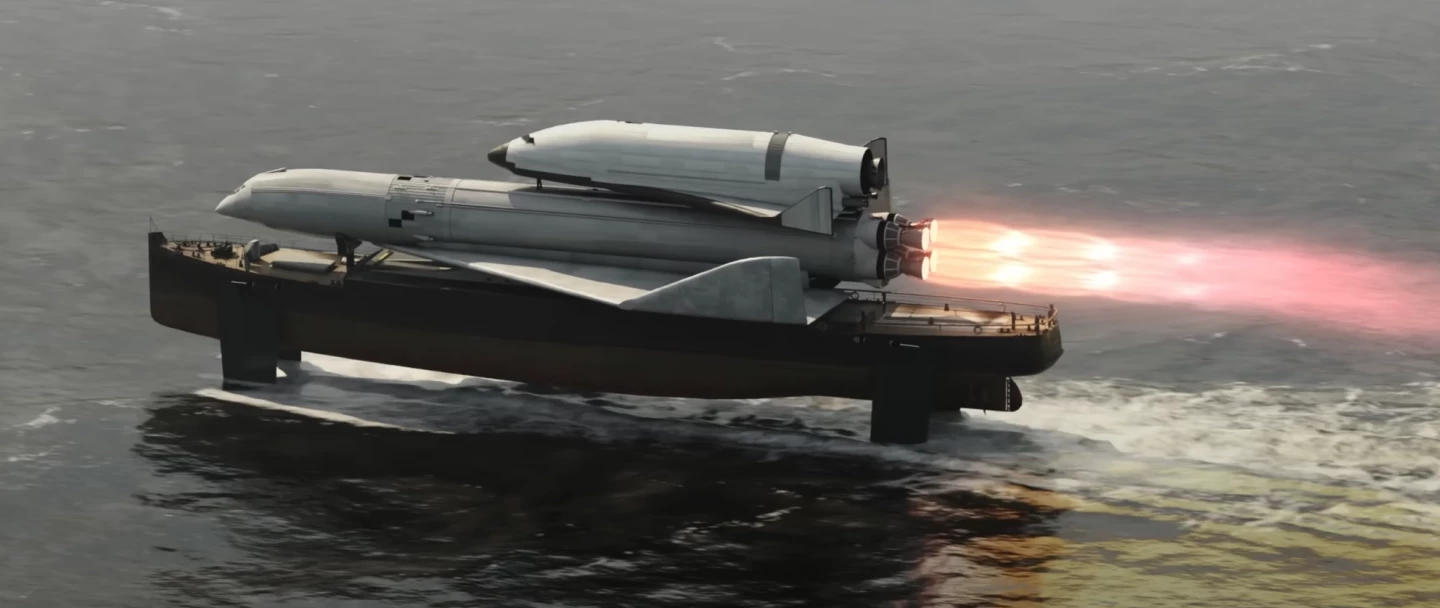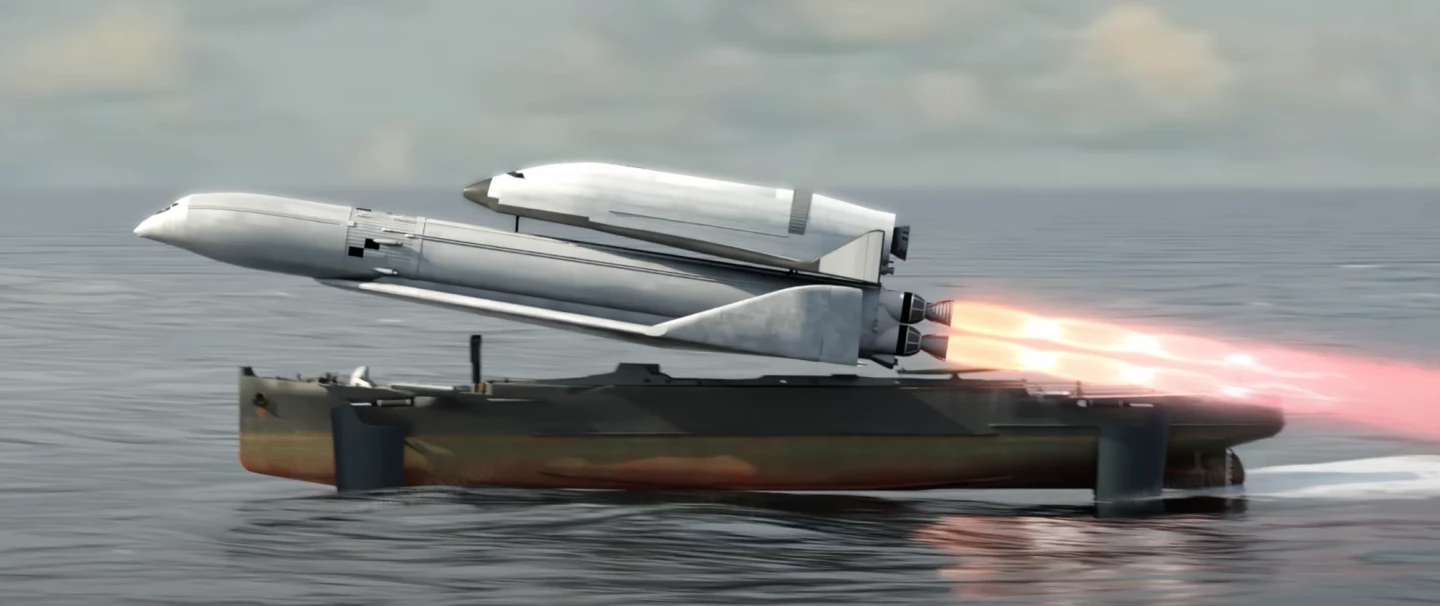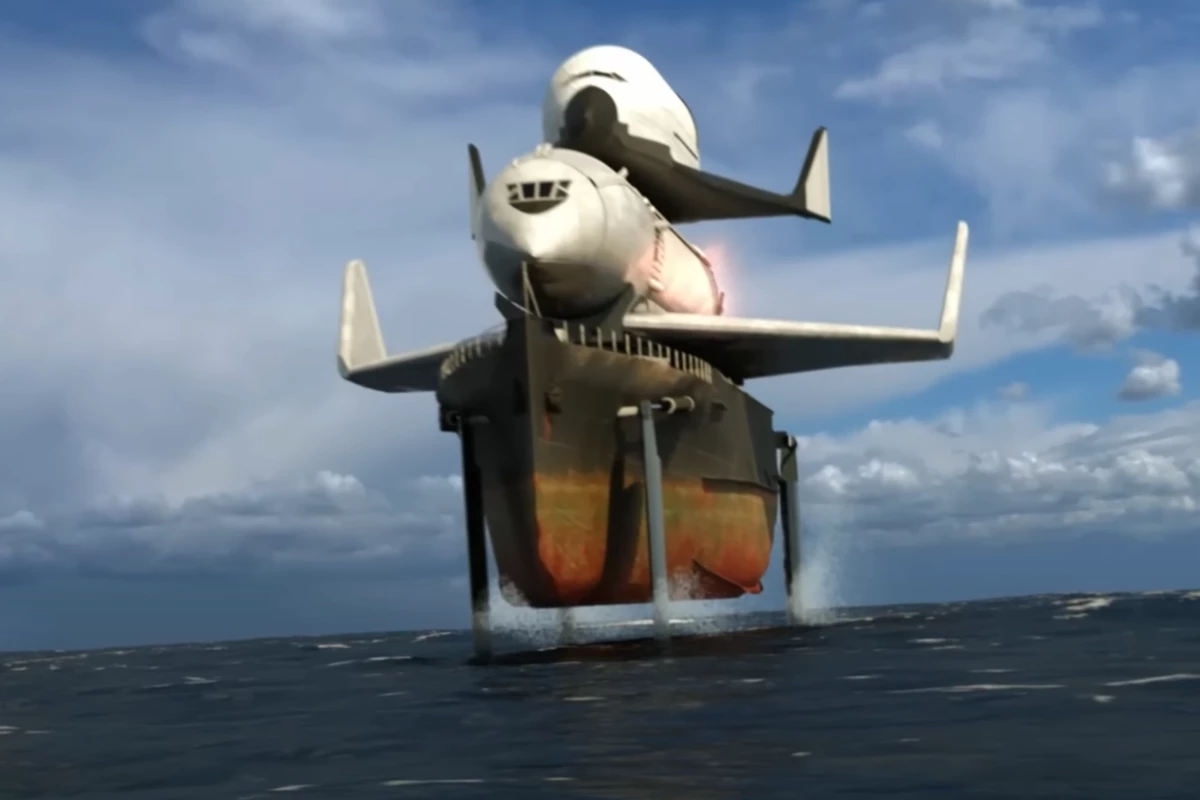YouTube channel "Hazegrayart" has created more than 100 beautifully-rendered videos imagining the launch or operation of some of the weirdest aircraft and spacecraft ever proposed in reality or science fiction.
The channel's latest video envisions a Soviet-era space shuttle launch proposal put together by aircraft manufacturer Sukhoi, known for its jet fighters, and hydrofoil/ground-effect vehicle specialist Rostislav Alexeyev, probably best known as chief designer of the Caspian Sea Monster ekranoplan prototype.
The Alexeyev/Sukhoi Albatros, according to Astronautix, was a three-stage shuttle launch system capable of sending a space shuttle skyward without the need for a launchpad or even a runway. All stages would be recoverable and re-usable.
Proposed in 1974, the system's base was a 70-m (229-ft), 2,000-tonne hydrofoiling barge called the "Albatros Momentum Block." On its back would sit the 91-m (298-ft) delta wing Albatros Carrier Aircraft weighing 1,250 tonnes fully fueled and boasting a liquid oxygen/liquid hydrogen rocket capable of producing 7.84 million kN (1,762,500 lbf) of thrust.

And on the back of that would sit the much smaller 49-m (160-ft) Albatros Raketoplan space shuttle, weighing just 320 tonnes fully fueled and with its own 1.96-million-kN (440,620-lbf) rocket.
The plan called for the second-stage carrier aircraft to fire its rockets, replenishing its fuel on the move from a 180-tonne reserve in the barge. This would accelerate the barge to hydrofoiling speed, at which point the drag would be greatly reduced, and the barge would then reach a launch speed around 180 km/h (112 mph), less than two minutes after the rockets were fired.

At this point, there would be sufficient lift under the wings of the carrier aircraft for liftoff, at which point it would blast the shuttle up to high altitude before it separated and continued toward orbit under its own rocket power, with the carrier aircraft gliding back down to Earth and landing.
This remarkably weird proposal was never signed off on – just as well, because, as Alexeyev should have been aware, hydrofoiling becomes an extremely dicey business above about 113 km/h (70 mph). At this kind of speed, the low-pressure zone over the "wing" of the hydrofoils drops to a pressure low enough that the water begins to boil.
This is known as cavitation, and creates pockets of vapor in the water, which collapse when the pressure normalizes, causing shockwaves. High-speed cavitation can bend, damage and fatigue hydrofoils – probably not ideal when you're carrying priceless space shuttles and launch vehicles on top.
Still, enjoy Hazegrayart's rendering of this launch procedure below.
Source: Hazegrayart







